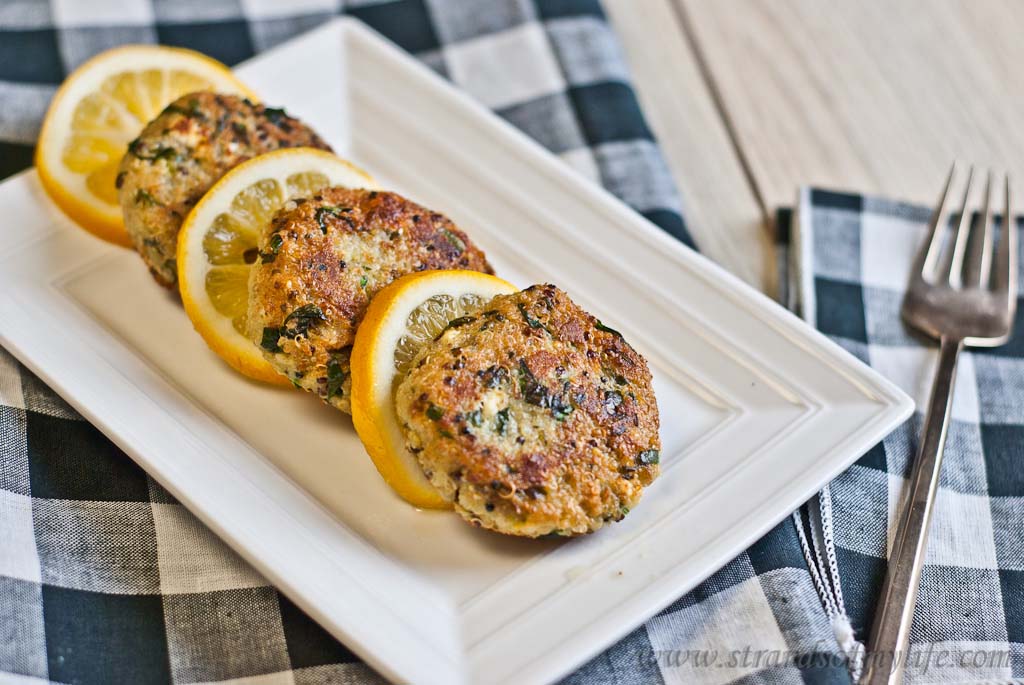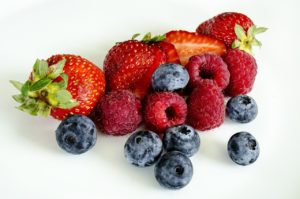My next video answers a question I get a lot and have answered here on my blog a while ago. The video expands on what I wrote. What alternatives can I use for forbidden high Fodmap foods that are staples of many recipes?
I will be continuing to create videos on IBS and the low Fodmap diet. If you want to be notified when I upload them, you can subscribe to my channel HERE.
Transcript of the Video – Alternative Foods
What can I do about substituting basic foods like onions, garlic and bread?
Welcome to Strands of My Life and this video on the Low FODMAP Diet. I’ve been on the Low FODMAP Diet for a couple of years now and I really don’t feel in the slightest deprived just because there are certain foods I can’t eat without having a reaction to them. My family eats low FODMAP dinners alongside me and you won’t hear any complaints from them. I eat a wide variety of foods and find substitutes for anything on the No-Go list. Today, I’m going to go over a few of those replacements.
Garlic
Garlic, of course, is something that none of us with IBS should be eating – it’s one of the worst culprits – but we can have garlic-infused oil. I always keep a bottle of garlic-infused olive oil in my pantry. Because the fructans in garlic, which is what hurts us, are not soluble in oil, you can put the garlic into the oil and the flavor comes out. The garlic then gets removed, and we don’t have a problem with it. I make pesto for pasta with no garlic, but I use a teaspoon of garlic-infused olive oil instead and nobody has ever guessed that there’s any difference.
Onion
The second food that is something we all have to keep away from just the same as garlic is onion. Instead of cutting up onions and putting them at the base of everything you make – because they do seem to be in a lot of different foods – all you do instead is cut up the green part of spring onions, or the green part of leeks, or even sometimes fennel chopped up small will give you that little bit of a kick of flavor that you need. I use those in exactly the same way that I’d use a chopped up onion or did use a chopped up onion, and put in a little bit of oil, fry it off, and then put your spices in, and then add your meat to brown it or whatever it is you’re cooking, or at the base of a risotto maybe as well, in exactly the same way as you’d use onion.
Honey
A lot of people love to use honey because it’s supposedly healthy. It is healthy for a lot of people. It’s just not healthy for us who have a FODMAP intolerance – who have IBS. But if you want that kind of a feel of honey as a liquid rather than sugar, you can use maple syrup or rice syrup. Now, remember that normal table sugar is not a big problem for us as long as we don’t eat too much of it, because the fructose in table sugar is in an equal quantity to the glucose in table sugar. We don’t get a reaction because the glucose, cell for cell, pulls the fructose through the lining of the stomach, which is where it’s supposed to go. So none of it gets to go down into the bowel, which is where the foods that don’t get absorbed get fermented and cause the symptoms for us. Now, you do have to be careful because the glucose gets a little bit tired of pulling all the fructose through the wall of the lining of the stomach and gives up after a while so don’t overdo it at all. But honey has more fructose then glucose, therefore it won’t all be pulled through the lining of the stomach and the excess goes down into the bowel and we have our issues.
Dried Fruit
What about if you’re making a dish with dried fruit in it? I wouldn’t want to see you putting in sultanas or raisins, or anything like that because they’re so concentrated. You could put a few in without too much of a problem, but the Fodmaps are quite concentrated. But what you can have are things like dried banana chips, you can have about ten of those, dried cranberries, a tablespoon. You can also have shredded coconut which is in a lot of baked goods, and also some savory ones. But just remembering that you can’t have more than a quarter of a cup at a time.
Cereal
Now what about wheat cereals like muesli or rye-based cereals? We can’t have those because of the fructans in the wheat, barley, and rye. It’s not the gluten in them that gives us a problem, that’s the protein part; it’s the fructans which are the carbohydrate part. But, you can have cornflakes, or rice cereals, or oats, although with oats, some people can have a bit of a reaction. Keep it to a quarter of a cup of raw oats, and then if you cook it, obviously it’ll be more as it absorbs the water or the milk that you put with it. But any of those cereals are fine for us.
Bread
What about bread – your normal wheat-based breads? Well, most of those we can’t have, but there are gluten-free breads. There are also oat breads, spelt bread, sourdough breads and we can have a couple of slices and then stop; no more of those.
Dairy
What about alternatives to milk – your normal dairy milk? Well, now there’s lactose-free milk. It’s still made from the cow – the milk from the cow – but lactose-free . A very safe alternative is rice milk. You shouldn’t have any reactions from that. You could also use oat milk, but again, just be careful with it, see if you react to it or not. I wouldn’t have high quantities of it. Soya milk? Yes, as long as it’s made from the protein of the soya bean. If it’s made from the whole bean, then no, don’t use it. Almond milk? You can have a little bit of it. We’re restricted to ten almonds at a time so just imagine how many almonds are in almond milk. So I wouldn’t be having a full glass of that.
What about cheeses? We can actually eat quite a few different cheeses. We can eat all the hard mature cheeses because they have very little lactose in them. A little bit of lactose is not going to worry us, unless you’re actually highly lactose intolerant of course. But if it’s just the FODMAP issue with lactose, then don’t worry about the lactose in hard cheeses. The same with butter by the way. You can also have brie, Camembert, cottage cheese – about four tablespoons of cottage cheese – two tablespoons of ricotta, mozzarella, half a cup of feta, and a couple of slices of halloumi. So that’s a wide variety of cheeses that you can still eat.
Flour
Finally, what about wheat flour? I mean all your baking usually gets made with wheat flour. There are various different blends that you can use of other flours. It’s best not just to use one gluten-free flour – wheat-free, barley-free, rye-free flour – because you need a combination of them together to create a really good baked product. I combine rice flour – white or brown – with tapioca flour and potato starch. I blend those together and use those and they work really well in my baked goods and they hold together well. Tapioca is kind of a binding flour.
Well, that’s a few of the substitutes for the foods that might hurt us. If you have irritable bowel syndrome and you are in pain and afraid to leave the toilet I’ve created the Inspired Life Low FODMAP Coaching Program just for you. This Low FODMAP Diet is a difficult diet to implement and this program will support you for six weeks while you do that. If you’re interested in having a chat about your issues and the program, please fill in the form at www.strandsofmylife.com/inspiredlife and I’ll give you a call. Thank you very much and goodbye.
Feta & Quinoa Patties
I had 2 part packets of quinoa left over for some reason so I created this recipe to use it all up. This is a pretty complete meal all in one dish so I actually didn't make anything else and there was plenty for the 3 of us with some left over for lunch. The patties stayed together really well and kept their shape, which is what I like to happen with patties, though they don't always behave.

- 1.25 cups quinoa
- 1 leek (green part only)
- 2 tbsp fresh coriander
- 1 tbsp fresh mint
- Zest of ½ lemon
- 200gms/7 oz feta
- 100gms/3.5oz spinach
- 2 eggs
- 1.5 cups dry breadcrumbs
- Salt & pepper
- Cook the quinoa according to the packet instructions.
- Finely chop the leek, spinach and herbs. Put into a bowl.
- Add the lemon zest.
- Dice the feta and add.
- Make sure the water has cooked off the quinoa and that it is relatively dry.
- Add to the mixture with the breadcrumbs.
- Break in the eggs and season with salt and pepper.
- Mix everything well.
- Form into patties and fry in a little oil until browned on both sides.
- Makes 18 patties.




Looks like a fun way to serve quinoa! Really creative dish — thanks.
Thanks, I felt creative while I was making it. LOL.
I like quinoa in every possible version and patties are high on my list 🙂 Nice video, thank you for sharing.
Thanks, Marta. Quinoa is a great grain. I didn’t used to like it that much but it has won me over.
Thanks for this recipe – am I to assume that all that are reading it know that the breadcrumbs should be “gluten free”?
We don’t need to eat gluten-free because gluten is the protein part of some grains and our problem is with carbohydrates, the fructans in some grains – wheat, barley and rye. We need to eat bread that has no wheat, barley or rye. But a small amount of breadcrumbs made from wheat can be eaten because we malabosrb Fodmaps – we are not intolerant to them. In this case, it would be safer for someone who has a problem with the fructans in wheat to use a fructan-free bread, which equates to a gluten-free one because all three grains have fructans and gluten.
That was long-winded but I hope it was clear.
These are excellent. However the are a bit dry. I made a blueberry
chutney for them and the combo was fantastic.
Having a sauce with them is an excellent idea. For me and my family they are not too dry but we all have different palates.
Thanks for the delicious recipe! The flavors are great, but I had trouble with the recipe and can’t figure out where I went wrong. After I mixed all of the ingredients it was loose – no way to make patties. I added one egg after another until it seemed like it would hold together. I ended up adding 3 or 4. Even then it held together only sometimes. Any ideas for what went wrong? Thanks!
I am not sure what you did wrong – maybe too much moisture left in the quinoa, a wrong measurement? Every time I make them they look like in the photo. If you find the mixture is too loose, don’t add more eggs, add more breadcrumbs to dry it out.
I think that loose is the wrong word. The mixture doesn’t hold together. I can’t form patties unless I add more eggs
Can you give a weight for “1 leek (green part only)”, please? Leeks vary a lot in size, and often, there’s not much choice. If I had a weight, I could prep in advance and freeze.
Also, if I were going to use onion oil instead of leek green, how would I go about that? Is there a magic proportion of onion to oil, or would I use an weight of onion equivalent to the leek green weight and just enough oil so it doesn’t burn? Thanks in advance for the illumination.
Y’all these are so good. I altered the recipe a little. Didn’t have mint so I added (a lot)of extra cilantro. Didn’t have enough feta so I added a little grated gruyere. And then I added sesame seeds.
Seriously. These are DELICIOUS
Love these, Tk you for the recipe. Has anyone baked them? I also made changes such as chopped green olives, fresh dill and parsley, vegan grated cheese, egg whites (extra) because I have to watch cholesterol. I used a mango salsa once and then a soy sauce based sauce. Next I’ll try a yogurt based one. I’ll keep looking at others comments to hear of new ideas. 🙂
I have made them many times. Your changes sounds good. Be careful with mango salsa though since mangoes are high Fodmap.